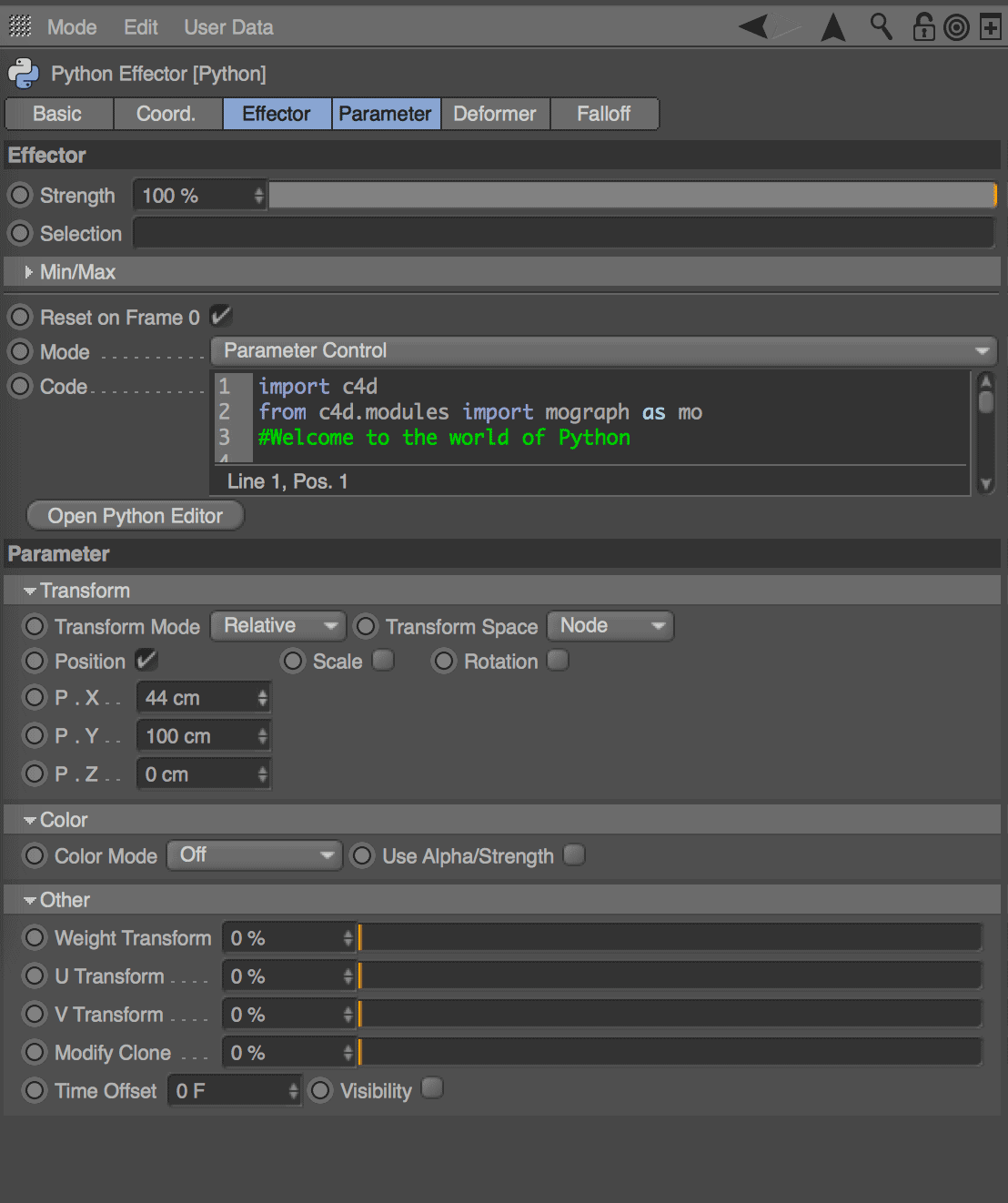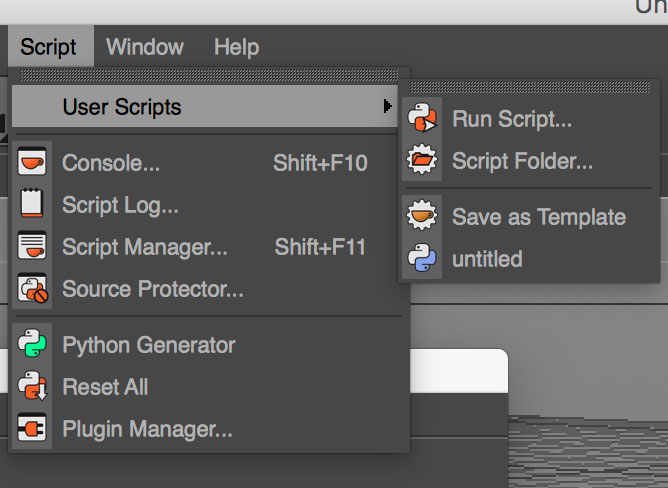C4D Spotlight: Learning Python to Expand Cinema 4D – Updated

Okay, I know what you’re thinking. Learning Python will be difficult and I don’t have time. Well, learning just a bit, enough to be dangerous, can expand what you do in Cinema 4D and automate repetitive tasks to speed up your workflow. I promise that I will not get technical in this post. This is an overview of Python, why you might want to learn Python as a Cinema 4D user, and where you can learn Python for free. And, of course, a bunch of tutorials and free Python scripts!
This is an older article that we decided to update because Python 3.10 will be out soon. The beta 3.10b went up today, May 21, 2021. The current version information is below in the blue box. Anything that is new is labeled with a New badge.
What is Python?
Python is an easy-to-learn, powerful, high-level programming language that useful for creating tools, plug-ins, or scripting for 3D applications, games, After Effects, and more. High-level refers to the fact that it’s made to be easy for humans to read and write, so that should give you some idea about it. It’s also well-integrated into Cinema 4D: as a Mograph Effector, as a script, a tag, an Xpresso node, and more.
New The Official Cinema 4D S24.035 Python Documentation
Yep, that one gets the big blue button because it’s important! Be sure to bookmark that page.
New Python Current Version is 3.95 (May 21, 2021)
With the release of Cinema S24, Python was updated to v3.9.1.
- See the Python List of Changes for S24.
- What’s New In Python 3.8.
- What’s New In Python 3.9.
- Python 3.10 is expected to be released any day now. See what’s new in Python 3.10.
Note: The beta 3.10b was released on May 21, 2021.
Python Effector demo by krotMonster
Download the project file (link in the video description)
Python is great because it
- Runs on any platform: Mac, Windows, Linux, and Unix.
- It’s open-source.
- Developed to be easy, flexible, and fun too. Seriously!
- There are libraries and resources online, and lots of free instructional materials.
It’s a common language used by Facebook, Dropbox, Google, Instagram, and more. It’s also used in the software. In broad terms, Python is used for web development, data analysis, game development, writing scripts, and much more.
In this post, we’re focusing on what you can quickly do with Python in Cinema 4D. Python can help you with repetitive tasks; creating geometry, splines, and extrusions; use it with plug-ins like TurbulenceFD. There are some tutorials to get you started, with a couple of more complex ones, so that you have an idea of what you can do with Python in Cinema 4D. There are also a lot of scripts you can download and run for yourself. Note: Python is not included in Cinema 4D Lite.
Fun fact: Did you know that Python is the second scripting language for Cinema 4D (C.O.F.F.E.E. is the first).
Python Tutorials and Scripts for Cinema 4D
With most of the scripts and tutorials below, you don’t need to know a lot about Python but check out Resources to Learn Python for places you can learn for free or at a low cost.
New Check out LearnPython.org for a free Intro tutorial on Python.
New Jobtensor has a nice introduction to Python. Check it out.
This is what the Python Effector Parameters look like.

Below is the Cinema 4D Script Menu, where you’ll access the Python Generator, Script Log, Script Manager, and more. Get familiar with this menu.

Maxon Labs – MAXON Labs is a new way to bring Cinema 4D’s latest innovations or useful tools from MAXON’s R&D team directly to you. This is new this month and there are only a few scripts up there now.
- Team Render HTTPS – This Python Plugin enables HTTPS Support for the Team Render Webserver.
- Extrudifier – This script generates random nested extrusions, creating a “greebled” look on any mesh. The generated polygons are constructed entirely by the Python code. User Data Parameters Seed Change the seed value to generate a new variation.
- All Python Scripts at Maxon Labs
PluginCafe – The official Cinema 4D Python examples (Github)
Creating a Custom Python Effector, Part 01: Intro to the Basics
With the Python Effector, you can take full power over Clones. Cineversity and Andy H Runyon explore some basic Python programming to create a mograph effector with the Python effector.
P4D101 – Getting started with Python in Cinema 4D
CG Rebel gives a nice overview and gets you acquainted with Python in Cinema 4D.
Intro to Python 1 – Python Fundamentals
Jack Bransfield from Chicago C4D helps Cinema 4D users wrap their heads around the basics of Python in Cinema 4D.
Intro to Python 2 – Talking to Cinema 4D
Jack from Chicago C4D teaches you how Python and Cinema 4D communicate.
New 5 Lines of Python every C4D User Should Know
Alpha Pixel walks you through some useful snippets of code.
Creating Geometry With Python In C4D
Manuel from Entagma explains how to create a cool Plexus-inspired wireframe in Cinema 4D with Thinking Particles and Python. This is a more advanced level tutorial but easy to follow and it shows what cool things you can do with Python in Cinema 4D.
Simon Holmedal – Workflow Techniques using Python: Xpresso
Simon Holmedal has integrated XPresso/Python into his daily workflow. In this video, he shows some really incredible examples (Nike Mercurial for World Cup and a personal project) where scripting has helped him in his production work. He explains how he uses scripting and MoGraph concurrently.
Cinema 4D Python: Step Offset generator
Mike Udin shows you how to create multiple contours of the splines with additional effects. The tutorial is in Russian but you should be able to follow along visually. Download the script here.
Curious Animal: Python Scripts for Cinema 4D
Curious Animal as several scripts with instructions on their blog. Some may be for older versions of Cinema 4D, but I would imagine that they still work.
C4D Python Party: Bend Chain
To explain, read the post and download the script here.
- C4D Python Snippet: Navigating the Hierarchy
- C4D Python Party: Rigging Splines
- Finally, C4D Python Fun: Copying Things
Hypoly Lab
- Replace Objects
- Bounce Card Script for MAXON CINEMA 4D – This is a handy Python Script for Cinema 4D that will make targeting those light hotspots much easier.
- Hair Guides to Spline
- And more (VraySubdivs. MuteLayers, SweepTaper, and more…)
More Python Scripts
Fluid Simulation R & D on TurbulenceFD with free Python Script
David Torno created a python script to help create a Jawset TurbulenceFD depth pass for smoke simulations using MAXON CINEMA 4D.
Freebie: C4D: Free Plug-ins, Animation Trigger, and Gradient Sequencer Effectors
Adam Heslop at PixelsInProgress has several free plug-ins and python scripts for Cinema 4D.
Tutorial/Freebie: ShuffleArray Effector for CINEMA 4D
Douwe shares his new simple MoGraph Python Effector script, as well as a tutorial on how to use the script.
VoronoiGenerator for Cinema 4D
Developed by Dominik Ruckli, the VoronoiGenerator is a Python plug-in for Cinema 4D that generates a 2D Voronoi Diagram or a Delaunay Triangulation.
Freebie: Smart Stairs for C4D
Smart Stairs is a Python-based, parametric stair generator for CINEMA 4D from The Pixel Lab.
Want to learn more? Resources to Learn Python
If you want to take this further and really learn Python, perhaps to build your own plug-ins and software, here are some resources. You can learn Python from paid training services like Plural Sight or Lynda.com but there are also some free courses from universities that may interest you.
Download Python source code and installers
Cinema 4D Python SDK Documentation – This is useful if you want to build plug-ins for Cinema 4D.
An Introduction to Interactive Programming in Python (Part 1)
Rice University via Coursera
An Introduction to Interactive Programming in Python (Part 2)
Rice University via Coursera
Programming for Everybody (Getting Started with Python)
University of Michigan via Coursera
Learn to Program Using Python
University of Texas Arlington via edX
CS For All: Introduction to Computer Science and Python Programming
Harvey Mudd College via edX
Python for Everybody — Exploring Information
via Independent
Introduction to Computing using Python
Georgia Institute of Technology via edX
Posted by Michele

